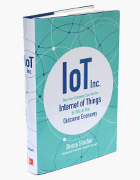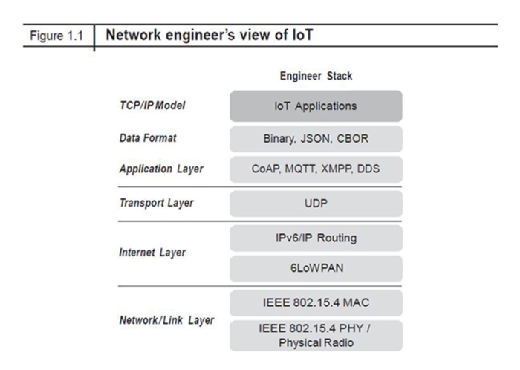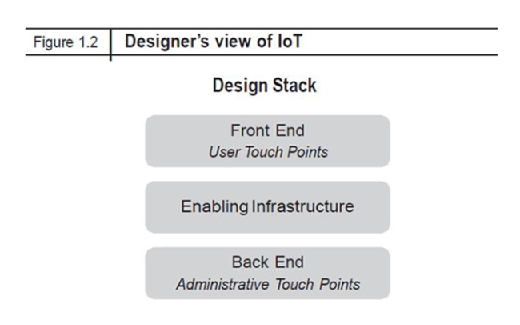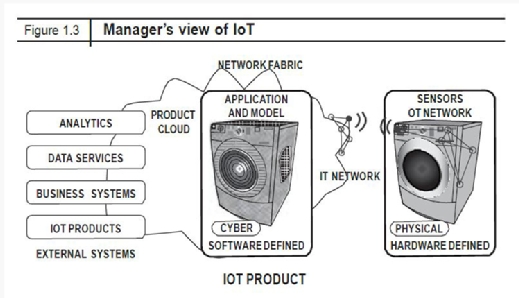Book excerpt: Use IoT to win in the outcome economy
The following is an excerpt from 'IoT Inc: How Your Company Can Use the Internet of Things to Win in the Outcome Economy' by author Bruce Sinclair and published by McGraw-Hill.
IoT tech defined from a value perspective
The Internet of Things is a technology you can use in your product and your company to greatly increase value and competitiveness. Since it's new, we need to understand how it works before we can put it to work. Right now, it may seem futuristic, but it's not. It's being used today to make money -- and how it works is not complicated, at least not for our purposes.
Let's start with a few definitions. I'll be using the term Internet of Things product, or IoT product, in this book. I don't like the term connected product, or smart product for that matter. I don't like them because I think they set the bar too low.
Tech Talk
An IoT product can be:
- A discrete product
- A system
- An environment
We've had smart products for over half a century. For a long time we've been using embedded systems to make dumb products smart -- so nothing new here. And connected products are at least a decade old; I was using an iPhone 1 in 2008 to control devices and access sensors across the world to demonstrate my then company's connected home platform. It's for these reasons I use the term IoT product. The IoT product goes beyond the smart product and the connected product by bringing to bear the full capability of the Internet into physical products. Unfortunately the "IoT home" doesn't have the same recognition or ring to it as the "smart home" or "connected home," so I'll still use smart and connected as adjectives for certain types of products.
 Bruce Sinclair/McGraw-Hill
Bruce Sinclair/McGraw-Hill
Having said that, an IoT product is actually a system, or more precisely, a system of systems. It's self-aware and communicates with other systems and people. In this book an IoT product is overloaded to mean a discrete product, or a closed system, or a closed environment. An example of an IoT product is a connected clothes dryer. An example of an IoT system is a telematics product for transportation logistics. And an example of an IoT environment is a smart building. In all cases, these are physical things ... physical products.
The Internet of Things is still being standardized. As such, when developing an IoT product, the company often needs help "gluing" the different subsystems or components together. My clients employ one of two types of assembly partners to help their internal engineering team. When building systems or environments, like telematics or smart buildings, we work with system integrators. When building discrete products, like clothes dryers, we work with design houses. Reliance on these partners will decrease as IoT technology matures and standardizes.
Learn more
Download the entire first chapter of IoT Inc: How Your Company Can Use the Internet of Things to Win in the Outcome Economy or buy a copy here.
Both types of service providers are new to IoT, and they naturally approach it based on their experience and institutional knowledge. System integrators approach IoT as they do networks. Design houses approach IoT as they do industrial design or mobile app development. And as expected, both view the technology behind IoT products differently.
The system integrator view
Engineers look at IoT technology as a networking stack, which is, in a sense, simply a protocol map (see Figure 1.1). Mapping protocols from where the sensor data come in, to the application is the absolute wrong way to look at the tech -- at least for business.
Tech talk
A protocol is a language used to communicate between devices or systems. For details, see the section "Network Fabric" below.
This is plumbing and not where the value originates. It does not mean that if you sell plumbing, you are not providing value, but plumbing is a means to an end; it is the way to get data from one place to another. I don't look at IoT tech as a networking stack because it doesn't properly isolate and highlight where value is created.

The design house view
Designers have a different view (see Figure 1.2). They ask, "What are the end-user touch points?" "What's the back-end interface for the customer?" And "How do we tailor the product to fit both their needs?" Designers look at IoT tech as a front end and back end with enabling infrastructure in between. That's a little better. That's a little closer to value, but there's a better way.

The business view
Of course, system integrators and design houses need a business angle, but that's not their primary perspective. Inspired by cyber-physical systems and software-defined networks, the business view (see Figure 1.3) groups IoT tech into these four parts:
- The software-defined product
- The hardware-defined product
- The external systems
which are all linked by:
- The network fabric

A fifth part, which isn't really a part, permeates the entire system. IoT cybersecurity is broader than IT security because it protects data at rest and data in motion, requiring knowledge in mobile security, network security, app security, web and cloud security, and system security. The business counterpart to cybersecurity is risk management.
Tech talk
Cybersecurity is technology that protects the confidentiality, integrity, and accessibility of the IoT product's data at rest and in motion. See Chapter 16.
All incremental value from an IoT product comes from transforming its data into useful information. Information -- IoT is pure information technology, and information is from where its value emanates.
The ingredients of this information are different data, lots of data from the product's sensors and external systems. The recipe, which defines how the data are put together, is described by the cyber model. Value is created by executing the model with the application and interrogating it with analytics. This top-down view, where value defines the information we need, which defines the data we need, is the best way to look at IoT tech for business. The trio of value is the cyber model, the application, and the analytics.
All other technology is there to collect and deliver data. Let's use this value-centric perspective to look at IoT tech in more detail.
Reprinted with permission from McGraw-Hill, copyright © 2018







